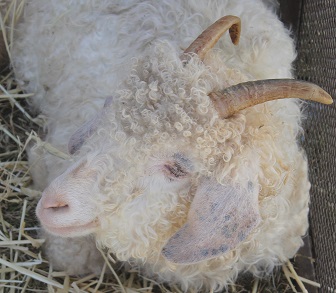Learn About Goat Production, Including Meat, Milk, and Wool
Domestic goats are kept on for many different reasons. In this course, you'll learn about breeds, different types of production, feed, kidding, and more. Perfect for adding goats to an existing farm setup, running a small hobby farm, or general learning.

Course Duration: 100 hours
Course Structure
There are 9 lessons in this course.
- Nature and Scope of Goat Production
- Introduction and History
- Biological Terminology
- Uses of Goats and Goat Production
- Goats Breeds Overview
- Introduction to Farm Systems
- Keeping a Buck
- Truths and Myths about Goats
- Goat Psychology
- Social Structure
- Goat Breeds and Breeding
- Dairy Goats
- Saanen
- Toggenburg
- British Alpine
- Anglo-Nubian
- Fleece Goats
- Angoras
- Cashmere
- Meat Goats
- Boer Goats
- Spanish Goats
- Savannas
- Kiko
- Myotonic
- Goat Skin
- Black Bengal
- Garganica
- Pet Goats
- Australian Miniature
- Nigerian Dwarf
- African Pygmy
- Feral Goats
- Selection and Breeding General Objectives
- Reproductive System Anatomy
- Puberty
- Breeding Season
- Flock Mating
- Pen Mating
- Hand Mating
- Reproduction Control Methods
- Synchronisation of Oestrus
- Out of Breeding Season
- Superovulation
- Artificial Insemination
- Genetics and Selection
- Understanding Genes
- Feeds and Nutrition
- Feeding
- Forage
- Hay
- Haylage
- Straw
- Wild Plants
- Concentrates
- By-products
- Minerals
- Feeding Strategies
- Feeding for milk production
- Feeding for meat production
- Health Management
- Health Problems
- Eco pathology
- Signs of Good Health
- Bacterial and Viral Diseases
- Clostridial Diseases
- Johne’s Disease (Paratuberculosis)
- Listeriosis
- Sore mouth
- Slow viruses
- Parasites
- Accidents, Emergencies and First Aid
- Control of Bleeding
- Tear wounds or lacerations
- Electric Shock
- Snake bites
- Fractures
- Poisoning
- Abortion and Genital Processes
- Chlamydiosis
- Q Fever
- Listeriosis
- Leptospirosis
- Toxoplasmosis
- Ketosis
- Digestive Problems
- Bloat
- Choking
- Acidosis
- Respiratory problems
- White Muscle Diseases
- Pinkeye
- Urinary Calculi
- Mastitis
- Metritis
- Sanitary Policy of Infectious Goats
- Choosing a Vet
- General Husbandry - Housing, Fencing, Grooming
- Space Requirements
- Housing and Fencing
- Grazing and Pasture Management
- Free Range
- Intensive Confinement
- Combination System
- Grazing Methods
- How Much Grazing
- Other Areas That Can Be Utilised For Grazing
- Hoof care
- Disbudding
- Dehorning
- Tattooing
- Vaccination
- Worming
- Grooming and Hair Care
- Kids and Kidding
- Hygiene during delivery
- The delivery
- Parturition/Birth
- Care of a newborn kid
- Early feeding
- Weaning
- Castration
- Dairy Production
- Milk Production
- Lactation Curve
- Quality and Composition
- Compositions of goat's milk
- Protein
- Fat
- Lactose
- Ash
- Vitamins
- Factors of variation
- Breeds and production systems
- Age and lactation number
- Different types of cheese
- Meat and Fiber Production
- Fiber Production
- Mohair
- Annual Management of Angora Flock
- Mohair Production
- Cashmere
- Annual Management of a cashmere flock
- Cashmere Production
- Meat Production
- Management of meat flock
- Slaughter terminology
- Carcass quality and grading
- Leather production
- Goat Farm Management
- On the Farm - Buildings and Structures
- Goat shelters
- Farming production systems
- Keeping records
- Goat Management
- Occupational Health and Safety Legislation
- Farm Safety
- Duty of care (employer and employer duties)
- Lifting and manual handling
- Protective Equipment
- Dealing with chemicals
- Storage and disposal of chemicals
- Handling tools and machinery
- Safety Audit
- Marketing your products
- Advertising your stock
- Where you can sell
Enrol Today
Ready to get started? Click on the orange enrol now button.
Have questions? Click here to email our course counsellors.
Where Do Goats Come From?
The goat is a member of the family Bovidae. The goat specifically belongs to the subfamily Caprinae and is closely related to the sheep. Goats are categorised as an herbivorous mammal and are one of the oldest domesticated species. Neolithic farmers are known to have herded wild goats to provide them with milk and meat and also bone, sinew and hair for making tools, clothes and building. The first area of captivity is known to be in the South-East Asia region about 8000BC. Before this time, goats were only known to be feral.
Uses for Goat and Goat Products
Domestic goats are one of the most useful animals to have as they are easy to look after and feed. In Europe and North America, intensive, high-yielding dairy goat herds are common. In Afghanistan cashmere goats are kept on rangelands for their meat and fleeces. In Africa, subsistence farmers commonly keep dual-purpose goats on their smallholdings for milk and meat. In Australia, goats are farmed and exported for meat in large volumes. Feral goats are commonly run alongside sheep and beef herds in New Zealand to help manage weeds and scrub in pasture. In the 1900’s goats have become very popular as pets, more commonly in Europe and North America.
Goat Breeds
There are over 300 different breeds of goats. Goat breeds fall into a number of general categories. They are generally classified by their main use e.g. dairy, meat, fibre/fleece or companion animals.
Common dairy goat breeds include:
- Saanen
- Toggenburg
- British Alpine
- Anglo-Nubian
Examples of specific meat breeds:
- Spanish meat goat
- South African Boer
- New Zealand Kiko
Examples of specific fibre/fleece goats:
Examples of companion goat breeds:
Australia has created its own experimental breeds:
- the "All Brown goats", and
- the Australian Melaan (the All Black goats breed).
There are also many cross breeds, including crosses between dairy goats and fleece goats.